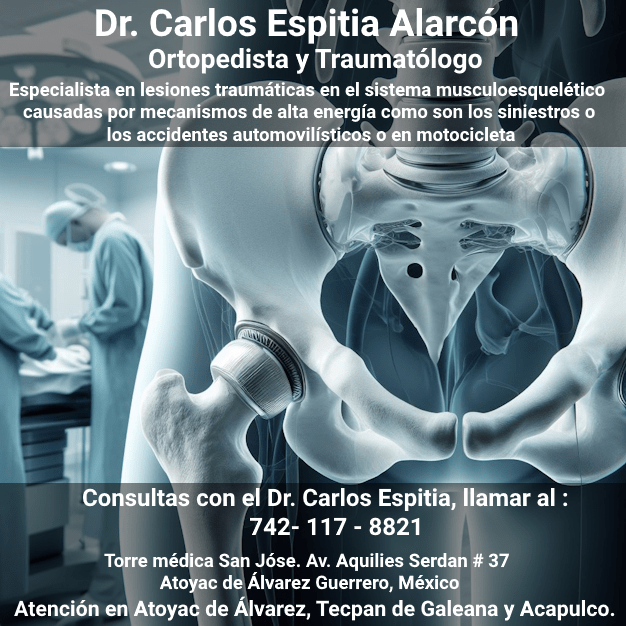Role of Trauma Damage Control Orthopaedic in polytraumas: a case of pelvic disjunction associated with hip dislocation with vascular injury
Fuente
Este artículo es publicado originalmente en:
https://www.ncbi.nlm.nih.gov/pubmed/28904652
https://www.ncbi.nlm.nih.gov/pmc/articles/PMC5567943/
http://www.panafrican-med-journal.com/content/article/27/122/full/
De:
Madani T1, El Alouani EM1, Mhammdi Y1, Kharmaz M1, El Ouadghiri M1, Lahlou A1, Omar LM1, El Bardouni A1, Mahfoud M1, Berrada MS1.
Pan Afr Med J. 2017 Jun 15;27:122. doi: 10.11604/pamj.2017.27.122.8699. eCollection 2017.
Todos los derechos reservados para:
Copyright and License information ▼
Droit d’auteur © Tarik Madani et al.
The Pan African Medical Journal – ISSN 1937-8688. This is an Open Access article distributed under the terms of the Creative Commons Attribution License which permits unrestricted use, distribution, and reproduction in any medium, provided the original work is properly cited.
Abstract
The knowledge of the pathophysiology of patients with severe trauma and the hemodynamic and inflammatory consequences of initial surgical management has led many surgeons to change their approach to the treatment of patients with severe polytraumas associated with lesions of the pelvis or of limbs by integrating the principles of sequential treatment or Trauma Damage Control Orthopaedic (TDCO). We report the case of a patient involved in a public road accident, admitted to hospital in a state of shock with pelvic disjunction and hip dislocation complicated by vascular injury in the same limb. Our approach was based on TDCO concepts by favoring external fixation of the pelvis after hip dislocation reduction. The timeliness of our apprach allowed early limb revascularization while avoiding the hemodynamic and inflammatory complications of open surgery.
KEYWORDS:
TDCO; pelvis; polytrauma
Resumen
El conocimiento de la fisiopatología de los pacientes con trauma severo y las consecuencias hemodinámicas e inflamatorias del manejo quirúrgico inicial ha llevado a muchos cirujanos a cambiar su enfoque al tratamiento de pacientes con politraumas severos asociados con lesiones de la pelvis o miembros integrando los principios de tratamiento secuencial o Control de daños en ortopedia y traumatología (CDOT). Presentamos el caso de un paciente involucrado en un accidente de tráfico público, ingresado en un hospital en estado de choque con disyunción pélvica y dislocación de cadera complicada por lesión vascular en la misma extremidad. Nuestro enfoque se basó en los conceptos CDOT, favoreciendo la fijación externa de la pelvis después de la reducción de la dislocación de la cadera. La puntualidad de nuestro estudio permitió la revascularización de las extremidades tempranas evitando las complicaciones hemodinámicas e inflamatorias de la cirugía abierta.
PALABRAS CLAVE:
control de daños; pelvis; politrauma
- PMID: 28904652 PMCID: PMC5567943 DOI: 10.11604/pamj.2017.27.122.8699
- [Indexed for MEDLINE]



